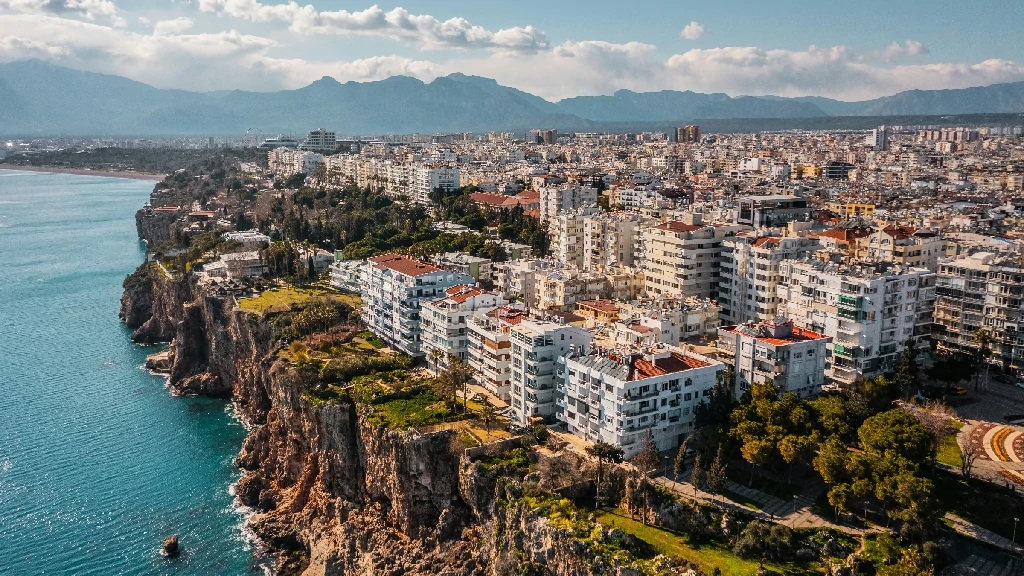What is the best time to visit Switzerland? This postcard-perfect destination captivates hearts with its snow-capped peaks, emerald lakes, and charming villages. Whether you’re drawn to the thrill of skiing down Alpine slopes, hiking through flower-filled meadows, or savoring Swiss chocolate in vibrant cities, this enchanting country offers something for every traveler. The answer to the perfect timing lies in your passions—be it carving through fresh powder in winter, basking in the summer sun, or enjoying the serenity of spring blooms or autumn hues. Switzerland truly shines year-round, making every season a magical backdrop for your adventures.
Overview of Switzerland’s Seasons
Switzerland is a destination that dazzles no matter the time of year, but the best time to visit truly depends on what you seek to experience. From spring’s vibrant colors to winter’s snow-kissed beauty, each season offers its unique appeal, ensuring unforgettable tourism in Switzerland year-round.
Spring (March to May)
- Description: As the snow melts away, Switzerland transforms into a canvas of blooming flowers and lush greenery. The weather is pleasantly mild, making it an excellent time to explore.
- Activities:
- Hiking through scenic trails like Lauterbrunnen Valley or the Jungfrau region.
- Visiting iconic cities such as Zurich, Geneva, and Lucerne to enjoy cultural and historical landmarks.
- Exploring Switzerland’s countryside with its picturesque villages and meadows.
- Advantages:
- Fewer crowds compared to the summer rush.
- Moderate prices on flights and accommodations, making spring an affordable option for tourism in Switzerland.
Summer (June to August)
- Description: Summer in Switzerland brings warm temperatures, verdant landscapes, and the peak of the tourist season. It’s the ideal time for outdoor enthusiasts.
- Activities:
- Lake cruises on Lake Geneva, Lake Zurich, or Lake Lucerne.
- Hiking the Alps, including famous trails like the Matterhorn Base Camp.
- Exploring Swiss National Park, the oldest national park in the Alps.
- Advantages:
- Perfect weather for outdoor activities like hiking, biking, and swimming.
- Long daylight hours allow for extended exploration.
- Vibrant festivals and events, enhancing the summer tourism in Switzerland experience.
Autumn (September to November)
- Description: Autumn paints Switzerland in golden and red hues, creating breathtaking landscapes and a serene atmosphere.
- Activities:
- Attending wine festivals in regions like Lavaux and Geneva.
- Scenic train rides through the Swiss countryside, such as the GoldenPass Line or Glacier Express.
- Capturing stunning photographs of fall foliage and tranquil lakes.
- Advantages:
- Lower tourist crowds mean quieter attractions and easier travel.
- Off-season rates on accommodations and tours.
- Ideal for those seeking a more peaceful tourism in Switzerland experience.
Winter (December to February)
- Description: Switzerland becomes a winter wonderland during this season, with snow-covered landscapes and festive charm.
- Activities:
- Skiing in world-class resorts like Zermatt, St. Moritz, and Davos.
- Visiting enchanting Christmas markets in Zurich, Basel, and Lucerne.
- Enjoying sledding, snowshoeing, and cozying up by roaring fires in mountain lodges.
- Advantages:
- The ultimate destination for winter sports enthusiasts.
- Magical holiday celebrations add to the festive atmosphere.
- A must-visit for anyone seeking a quintessential winter tourism in Switzerland experience.
Each season in Switzerland offers something distinct and unforgettable. Whether you prefer vibrant cityscapes, serene nature, or adrenaline-packed adventures, Switzerland welcomes you to explore its timeless beauty.
Best Time to Visit Switzerland Based on Activities

Switzerland’s charm lies in its diverse offerings that cater to every type of traveler. Whether you’re seeking adrenaline-pumping adventures or cultural experiences, understanding the best time to visit Switzerland based on activities ensures you make the most of your trip. Here’s a breakdown to plan your perfect journey and enjoy the finest of tourism in Switzerland.
For Skiing and Snow Sports
- Best Months: December to February.
- Highlights:
- Glide down the slopes of world-renowned ski resorts like Verbier, Davos, and Zermatt.
- Indulge in après-ski experiences, from cozy chalets to lively mountain bars.
- Try unique winter activities like snowshoeing, ice climbing, and sledding in the Alps.
For Hiking and Outdoor Adventures
- Best Months: June to September.
- Highlights:
- Traverse iconic trails such as the Matterhorn Base Camp trek and Lauterbrunnen Valley.
- Discover hidden gems like the Five Lakes Walk in Zermatt or Oeschinen Lake in Kandersteg.
- Enjoy family-friendly nature excursions and high-altitude adventures with breathtaking Alpine views.
For Scenic Train Rides
- Best Months:
- April to October for sweeping panoramic views of lush valleys and towering peaks.
- December for enchanting winter landscapes and snow-covered vistas.
- Highlights:
- Marvel at the engineering and natural beauty of the Glacier Express, connecting Zermatt and St. Moritz.
- Enjoy the Bernina Express, a UNESCO World Heritage route offering stunning alpine scenery.
- Ride the GoldenPass Line for picturesque villages, sparkling lakes, and majestic mountains.
For Festivals and Local Culture
- Best Months: Summer and early autumn.
- Highlights:
- Attend the Montreux Jazz Festival in July or the Locarno Film Festival in August.
- Explore the September wine festivals in Lavaux and Geneva, celebrating Switzerland’s rich viticulture.
- Dive into Swiss traditions at events like the Fête de l’Escalade in Geneva or Zurich’s Street Parade.
For City Exploration and Shopping
- Best Months: March to May and September to November.
- Highlights:
- Wander through historic streets in Zurich, Bern, and Geneva, and admire their architectural wonders.
- Shop for luxury watches, Swiss chocolates, and artisanal crafts in exclusive boutiques.
- Visit iconic museums like the Kunsthaus Zurich and the Olympic Museum in Lausanne.
Switzerland’s diverse activities make it a year-round destination. From skiing in the winter wonderland to hiking under the summer sun, there’s never a wrong time to indulge in tourism in Switzerland. Choose the season that matches your interests, and let the Swiss adventure begin!
Regional Recommendations by Season

Switzerland’s regions transform with the seasons, offering unique experiences no matter when you visit. Here’s a guide to the best time to visit Switzerland by season, showcasing the most captivating destinations to include in your itinerary for exceptional tourism in Switzerland.
Spring (March to May)
- Regions:
- Lake Geneva: Witness flower festivals, stroll through vineyards, and enjoy the mild climate along the lake’s picturesque shores.
- Ticino: Explore Swiss-Italian charm with blooming camellias and magnolias in parks and gardens.
- Lucerne: Admire the serene Lake Lucerne and enjoy hiking trails framed by blossoming landscapes.
Summer (June to August)
- Regions:
- Interlaken: A hub for outdoor adventures, including paragliding, hiking, and canyoning, nestled between Lake Thun and Lake Brienz.
- Jungfrau: Perfect for exploring alpine trails, scenic mountain railways, and panoramic views of iconic peaks.
- Lake Zurich: Experience water sports, lake cruises, and vibrant summer festivals in Zurich’s lively lakeside setting.
Autumn (September to November)
- Regions:
- Geneva: Celebrate the grape harvest with wine tasting events and local festivals in this cosmopolitan lakeside city.
- Lavaux Vineyards: A UNESCO World Heritage Site offering breathtaking fall foliage, terraced vineyards, and wine tours.
Winter (December to February)
- Regions:
- Zermatt: A premier destination for skiing and snowboarding, with the Matterhorn providing an iconic backdrop.
- St. Moritz: Luxurious winter sports and world-class resorts with glamorous après-ski activities.
- Engelberg: Family-friendly skiing and snowshoeing, complemented by traditional Swiss village charm.
- Zurich and Basel: Immerse yourself in the festive atmosphere of Christmas markets, featuring handcrafted goods, mulled wine, and dazzling lights.
Switzerland’s diverse regions ensure that every season offers something special. Whether it’s the floral beauty of spring, the adventure-packed summer, the rich hues of autumn, or the magical winters, there’s a perfect destination waiting for you in Switzerland tourism. Choose your favorite season and set out to explore these stunning regions!
Tips for Planning Your Trip to Switzerland

Planning ahead ensures a seamless and enjoyable visit to Switzerland. Here are essential tips to help you make the most of your journey while addressing the best time to visit Switzerland and optimizing your Switzerland tourism experience.
1. Weather Preparation
- Pack Layers:
- Switzerland’s weather can be unpredictable, even in summer. Layers allow you to adapt to cool mornings, warm afternoons, and chilly evenings.
- Include waterproof jackets and sturdy shoes, especially if hiking or exploring mountainous regions.
2. Booking Advice
- Summer and Winter:
- These peak seasons attract high demand, especially for ski resorts and popular attractions. Book accommodations, tours, and transportation well in advance to secure the best options.
- Autumn and Spring:
- These shoulder seasons often come with last-minute deals on flights and accommodations, ideal for budget-conscious travelers.
- Fewer crowds make it easier to enjoy attractions and outdoor activities without the rush.
3. Travel Considerations
- Swiss Travel Pass:
- A must-have for hassle-free travel across Switzerland, providing unlimited access to trains, buses, and boats. It also offers discounts on mountain excursions and free entry to many museums.
- Accommodation Choices:
- Select lodgings close to your planned activities to minimize travel time. For instance:
- Stay in Zermatt or St. Moritz if skiing is your focus.
- Opt for Lucerne or Interlaken for easy access to lakes and hiking trails.
- Choose Zurich or Geneva for urban exploration and cultural attractions.
- Select lodgings close to your planned activities to minimize travel time. For instance:
Additional Tips
- Currency: Switzerland uses the Swiss Franc (CHF). Credit cards are widely accepted, but it’s wise to carry some cash for small purchases.
- Language: While English is commonly spoken in tourist areas, knowing basic German, French, or Italian phrases can enhance your experience.
- Local Etiquette: Respect Swiss punctuality and rules, especially on public transport and in natural reserves.
By following these tips, you’ll be well-prepared to experience the best of Switzerland, no matter the season. Whether you’re chasing adventure or relaxation, thoughtful planning ensures your tourism in Switzerland is as memorable as the stunning landscapes you’ll encounter.
FAQs
Answer: The most affordable times to visit Switzerland are during the shoulder seasons:
Spring (March to May): Enjoy blooming flowers and fewer crowds at a lower cost.
Autumn (September to November): Experience stunning fall foliage and discounted accommodations and flights.
Answer: Absolutely! Each season offers unique attractions and activities:
Spring: Flower festivals and hiking.
Summer: Outdoor adventures and vibrant festivals.
Autumn: Wine harvests and scenic foliage.
Winter: Skiing, Christmas markets, and snow sports.
Answer: Winter in Switzerland offers a variety of activities for non-skiers:
Snowshoeing: Explore tranquil snow-covered trails in places like Engelberg.
Ice Skating: Glide on outdoor rinks in scenic settings such as Zurich or Geneva.
Sledging: Thrill your inner child on sledging tracks like those in Grindelwald.
Thermal Spas: Unwind in soothing hot springs, such as those in Leukerbad.
Answer:
The most budget-friendly months to visit Switzerland are March, April, October, and November. These months fall in the shoulder seasons when tourist numbers are lower, and hotels, flights, and attractions often have discounted prices. For example:
Flights to Switzerland can be up to 30% cheaper compared to the summer or winter peak seasons.
Many accommodations in popular destinations like Interlaken and Lucerne offer reduced rates.
Why these months?
Spring (March and April): Fewer tourists, especially as ski season winds down but before the summer rush.
Autumn (October and November): Mild weather for city exploration and off-season deals on tours and transportation.
Answer:
A 7 to 10-day trip is ideal to experience Switzerland’s diverse attractions. Here’s a suggested itinerary:
Days 1–2: Explore Zurich (Old Town, Lake Zurich, Swiss National Museum).
Days 3–4: Visit Lucerne (Chapel Bridge, Mount Pilatus, Lake Lucerne).
Days 5–7: Head to Interlaken and Jungfrau (hiking, paragliding, or mountain excursions).
Days 8–10: Spend time in Geneva (Lake Geneva, the United Nations, museums) or Zermatt (Matterhorn, skiing, or hiking).
For shorter trips, focus on a specific region, like the Alps for adventure or cities for cultural experiences.
Answer:
The shoulder seasons—spring (March to May) and autumn (September to November)—are the cheapest for the following reasons:
Lower demand leads to more affordable flights and accommodations.
Some attractions offer seasonal discounts or reduced entrance fees.
Nature enthusiasts can enjoy hiking trails, countryside blooms, or fall foliage without the crowds.
Answer:
The coldest month in Switzerland is January, with average temperatures ranging from -2°C to 2°C (28°F to 36°F) in cities like Zurich and Geneva.
Mountain regions, such as Zermatt or St. Moritz, experience much colder conditions, often dropping to -10°C (14°F) or lower.
Despite the chill, this is a magical time for winter activities like skiing, snowboarding, and visiting Christmas markets.
Answer:
Yes, Switzerland is one of the most expensive travel destinations, known for its high living standards. However, costs vary based on travel style:
Luxury travelers: May spend CHF 400–600 ($440–660 USD) daily for upscale accommodations, fine dining, and private tours.
Budget-conscious travelers: Can manage with CHF 100–150 ($110–165 USD) per day by staying in hostels, eating at local bakeries, and using the Swiss Travel Pass.
Tips to save money:
Travel during shoulder seasons to find discounts.
Opt for accommodations with kitchens to cook meals.
Use the Swiss Travel Pass for unlimited travel on public transport and discounted access to attractions.
Answer:
Here’s a breakdown of an average 7-day budget:
Accommodation:
Budget: CHF 70–100/night (hostels, budget hotels).
Mid-range: CHF 150–250/night.
Luxury: CHF 300–600/night.
Food:
Budget: CHF 20–30/day (self-catering or casual dining).
Mid-range: CHF 50–70/day (restaurants).
Transportation:
Swiss Travel Pass: CHF 200–300 (covers most public transport).
Attractions:
Budget: CHF 50–100 for sightseeing, museums, and excursions.
Total estimate:
Budget: CHF 1,500–2,000 ($1,600–2,200 USD).
Mid-range: CHF 2,500–3,500 ($2,700–3,800 USD).
Answer:
Yes, English is widely spoken, especially in tourist areas, hotels, and restaurants. Switzerland has four official languages:
German: Spoken in Zurich, Lucerne, and Interlaken.
French: Spoken in Geneva, Lausanne, and Montreux.
Italian: Spoken in Ticino (southern Switzerland).
Romansh: Spoken in small parts of Graubünden.
While locals are multilingual, knowing a few basic phrases in German, French, or Italian can enhance your experience.
Lorem ipsum dolor sit amet, consectetur adipiscing elit, sed do eiusmod tempor incididunt ut labore et dolore magna aliqua. Ut enim ad minim veniam, quis nostrud exercitation ullamco laboris nisi ut aliquip ex ea commodo consequat.
Lorem ipsum dolor sit amet, consectetur adipiscing elit, sed do eiusmod tempor incididunt ut labore et dolore magna aliqua. Ut enim ad minim veniam, quis nostrud exercitation ullamco laboris nisi ut aliquip ex ea commodo consequat.




